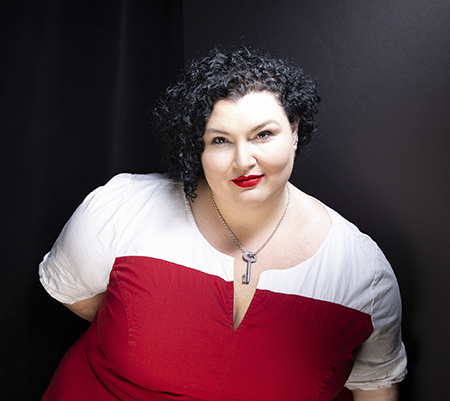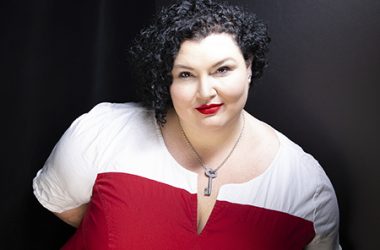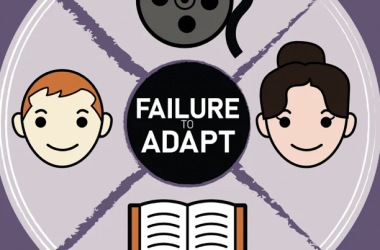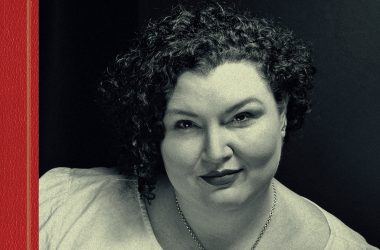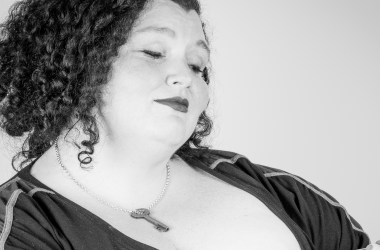By Meg Elison
Uncanny Magazine
June 4th, 2020
Beni can always guess which ones are going to be the most expensive. If the girl had sprung for the keepsake rig—the plastic liner and the marbleized cardboard longbox to avoid creasing the bodice—that one was going to be pricey. It was also going to be ugly, in almost every case. Tacky keepsake box means tacky dress: beading, lace, those tiny cunting buttons all the way up the back. The bitch with that box is going to be bitter and tearful, saying something like “so much for my happy ending,” as she rips off the lid to show you. The dress will have come from David’s Bridal or some mall prom outlet with fake flowers on a plastic trellis masking stained acoustic tiles in the ceiling. Beni passes all those boxes right on by. He lifts his perfect brows and doesn’t even look.
The next section is the smallest and already overrun at the anus of dawn hour of seven AM: the couture dresses. There are only ever a dozen of these at most. Their original owners are slim, stylish women who wear sunglasses that cost a car payment and shoes that kill them but leave a good-looking corpse. Almost none of the queens who fight over one of these dresses could wear them. The original could only serve as bones for the seamstress to build something beautiful but much roomier around them. Still, they are good bones. These are universally hung, always in a garment bag and always in a fabric that makes you want to moan out loud when you touch it. Raw silk. Crepe de chine. Bridal satin so slippery it’s almost an obscenity to your fingers.
Beni looks these over, even considering inspecting one with marabou trim up closer. He is an absolute sucker for marabou; blame Alicia Silverstone in her iconic 1995 performance as the world’s most lovable rich little bubblehead. Who didn’t want to be Cher? But Beni knows better than that. No frivolous puffball is going to win this thing. Not this year.
It is the last year he can compete. Beni doesn’t need the calendar to remind him that he is about to age out of relevance; he has the crows’ feet and baby dewlap in the mirror to count that off more cruelly than plain old linear time ever could. He has one last shot at the title and he is going all-out this year. That means he has to stand out. So the David’s Bridal crowd is a no from him. The couture gowns are too predictable. He is headed to the outer reaches of the expo, where the weird stuff is kept.
There are dresses in the outer rim that are not white. Beni respects queens who pick other colors, and some of them had gotten away with it over the years. Ming DyNasty (2009) had sashayed to victory in a blood-red cheongsam with a mermaid cut and a face beat for the gods; her highlight was tiny golden scales when the photographers got up close. Before that, it had been Hildegard von Bangin’ (1967) in her medieval blue gown with bell sleeves and intricate crown braids. She was capitalizing on a nation still obsessed with Camelot. She had made it work.
Beni can picture every single winner of the Hymen Games in his mind, like a slideshow of snowstorms. Outside of those two, every single winner had worn white. He skips the colored tables and heads into the ethnic neighborhoods. There he finds the tulle and drama of the Roma dresses, the quinceañera contenders, the modest Mormon frocks with their high necks and long sleeves. He looks them over with a tailor’s eye. He’s about a size 16, and broad in the shoulders. He prefers sleeveless for obvious reasons.
He sweeps the room with his eyes, despairing of ever coming across something he could truly express himself in. And then he sees her.
She is sitting alone at a folding table. Hasn’t brought a tablecloth from home, just laid the dress out over the plastic tabletop and sat there staring at it, her chin in her hands.
Her face is oval, with high cheekbones barely showing in full cheeks. She wears glasses and keeps her lusterless dark hair long enough that she could do anything with it that she wanted. He knows at once that she puts it into the same low ponytail every day, nonetheless. She has a prominent keloid jutting out of her chin, and her skin is dark but sallow with darker spots under her small eyes. Beni itches to do her makeup and fuck with all that hair.
What he says is, “Hi.”
She looks up, a little startled. “Hi.”
He points at the dress she has laid there. “Mind if I take a look?”
She gives a little shrug and gestures at it with a few fingers. Beni picks it up.
The way a man holds a dress changes completely if he’s worn one. Watch a man handle a dress without knowing how one works, or how much power is in it. Watch him bunch it in his fist like its structure means nothing to him; see him treat it like laundry.
Beni holds the dress delicately and deftly, hands at the seams and examining the make of it. It’s homely as hell, he can see that right away. She’s not a great seamstress.
“Did you make this yourself?”
She nods, eyes already too shiny. “I didn’t have no money. I got a real nice pattern. And I saved up to buy the fabric.”
It is fine stuff. Beni’s fingers tell him that. It’s a high-grade silk, in a candlelit ivory shade of white that would flatter even his Midwestern pallor. On her deeper brown, it must have glowed.
Beni turns the dress over his forearm as gently as he would a burping baby. He notes the inexpertly concealed side zip and the low back. The bodice has a sweetheart neckline and spaghetti straps, but one of them has a twist in it. No liner. He steals a glance over at the girl, trying to guess her measurements.
“How long ago did you wear this?”
Her breath hitches a little when she inhales. “Just three years.”
“Mhmm.” He doesn’t want to get sucked into her sadness if he doesn’t have to. It’s tricky when you want someone’s wedding dress. Every single one of them has a story. “Are you about a fourteen?”
“About that, yeah. Small bust and wide hips. It’s why I learned to make my own clothes.”
Beni’s mouth softens a little at that. Nothing would have ever fit this girl right. Broad enough in the beam to need a plus-size store, but lacking the compensations that most big girls bring to the party. He guesses she’s a big band and a small cup. There is width in her hips, but he bets that when she stands up she’ll have a wide, square flat expanse of ass that will do her no favors.
He knows how that is. He is big but not hard; almost hairless and more suet than beef. He isn’t a bear or a daddy; just a big, soft man. He had taken to drag the way a toasted marshmallow takes to a graham cracker. He hardly needs to paint in his cleavage at all. This woman’s dress is going to fit him like a glove meant for a dimpled hand.
He looks back at the dress and sees that it’s better from the back than he could have guessed, given the substandard work of its construction. All down the back of the skirt and into the modest train, she had embroidered blue morpho butterflies and pink poppies. The work is excruciatingly fine; this is her real skill. He wonders if she wore glasses now after years of straining to see tiny stitches in a hoop. That compassionate thought is shoved aside as he begins to envision the magnificent headpiece and cowl he could make to match this, to elevate it. Blue butterflies to swirl around his face on tiny, stiff, nearly invisible wires. A cowl of pink poppies to wrap his traps and inch up his neck, making him look narrower, more feminine. He could make it seem as though butterflies were holding up his veil.
This has to be the dress. There is no other. It was made for her, but meant for him….
Meg Elison is a San Francisco Bay Area author. Her debut novel, The Book of the Unnamed Midwife won the 2014 Philip K. Dick Award and was a Tiptree longlist mention that same year. It was reissued in 2016 and was on the Best of the Year lists from Publishers Weekly, Kirkus, PBS, and more. Her second novel was also a finalist for the Philip K. Dick Award. Elison was the spring 2019 Clayton B. Ofstad endowed distinguished writer-in-residence at Truman State University, and is a coproducer of the monthly reading series Cliterary Salon.

